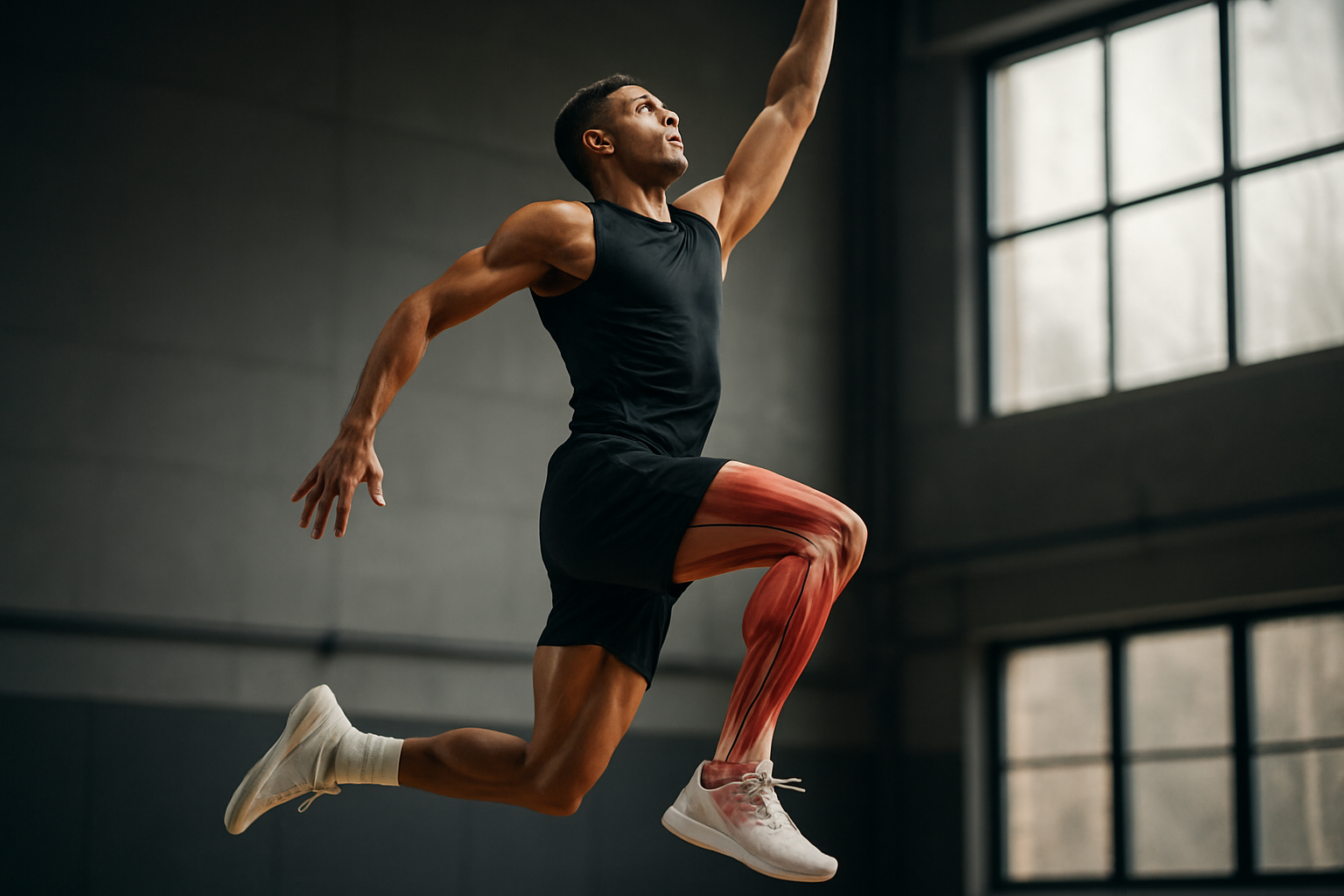Kinetic Chain Training: Revolutionizing Athletic Performance
In the ever-evolving landscape of sports science, a groundbreaking approach to athletic training has emerged, promising to revolutionize performance across diverse disciplines. Kinetic Chain Training, a holistic methodology that views the body as an interconnected system of joints and muscles, is reshaping how athletes prepare for competition and recover from injuries. This innovative technique challenges traditional isolated muscle training, emphasizing the body's natural movement patterns to enhance strength, flexibility, and overall athletic prowess.

As sports science progressed, researchers and trainers began to recognize the limitations of isolated muscle training. Traditional weightlifting and resistance exercises, while effective for building individual muscle strength, often failed to translate directly to improved athletic performance. Athletes found themselves strong in the gym but lacking in the fluid, coordinated movements required in their respective sports.
The shift towards functional training in the late 20th century paved the way for Kinetic Chain Training to gain traction. Coaches and physiotherapists started to incorporate exercises that mimicked real-world movements, acknowledging the body’s natural tendency to work as an integrated unit rather than a collection of isolated parts.
Understanding the Kinetic Chain
The kinetic chain refers to the interconnected system of adjacent body segments, joints, and muscles working together to perform movements. This chain can be categorized into two types: open and closed. In an open kinetic chain, the distal segment (furthest from the body) is free to move, such as when throwing a ball. Conversely, in a closed kinetic chain, the distal segment is fixed, as in a squat or push-up.
Kinetic Chain Training emphasizes the importance of training movements rather than muscles. It recognizes that no muscle works in isolation during functional activities or sports performance. Instead, muscles work synergistically, creating a sequence of activations that transfer energy from one body segment to another.
This approach considers three key components of movement:
-
Neuromuscular control: The ability of the nervous system to coordinate muscle activations.
-
Joint stability: The capacity of surrounding muscles to support and control joint movement.
-
Force production and absorption: The ability to generate and dissipate force through the kinetic chain.
By focusing on these elements, Kinetic Chain Training aims to optimize the body’s natural movement patterns, enhancing overall athletic performance and reducing the risk of injuries.
The Science Behind Kinetic Chain Training
The effectiveness of Kinetic Chain Training is rooted in solid scientific principles. Biomechanical studies have consistently shown that force production and movement efficiency are optimized when the entire kinetic chain is engaged. This is particularly evident in sports requiring explosive movements, such as sprinting, jumping, and throwing.
Research in neuromuscular physiology supports the kinetic chain approach. When muscles are trained in functional patterns, neural adaptations occur that enhance motor unit recruitment and synchronization. This leads to improved muscle coordination and power output, critical factors in athletic performance.
A study published in the Journal of Strength and Conditioning Research found that athletes who incorporated kinetic chain exercises into their training regimen showed significant improvements in functional movement scores and athletic performance metrics compared to those who followed traditional resistance training programs.
Moreover, the principles of Kinetic Chain Training align with the concept of specificity in sports training. By replicating the movement patterns and force production requirements of specific sports, athletes can develop more directly transferable skills and abilities.
Implementing Kinetic Chain Training
Incorporating Kinetic Chain Training into an athlete’s regimen requires a shift in thinking and approach. Rather than focusing on isolated muscle groups, exercises are designed to engage multiple joints and muscle groups in coordinated patterns. Some key principles in implementing Kinetic Chain Training include:
-
Multi-joint movements: Prioritize exercises that involve multiple joints working together, such as squats, lunges, and push-ups.
-
Sport-specific patterns: Design exercises that mimic the movement patterns of the athlete’s sport, ensuring transferability of strength gains.
-
Proprioceptive training: Incorporate exercises that challenge balance and body awareness, enhancing neuromuscular control.
-
Variable resistance: Utilize tools like resistance bands and cables to provide consistent tension throughout movement ranges.
-
Plyometrics: Include explosive movements that train the stretch-shortening cycle, crucial for many sports.
-
Functional core training: Focus on core exercises that replicate the stabilization demands of athletic movements.
-
Unilateral exercises: Incorporate single-limb movements to address muscle imbalances and improve coordination.
A typical Kinetic Chain Training session might include a dynamic warm-up focusing on mobility and activation of key muscle groups, followed by a series of compound exercises that progress from simple to complex movements. For example, a basketball player’s session could include:
-
Multi-directional lunges with medicine ball rotations
-
Single-leg deadlifts transitioning into explosive jumps
-
Cable chops and lifts mimicking defensive movements
-
Plyometric push-ups into ball catches
The session would conclude with sport-specific drills that integrate the strength and coordination gains into basketball-specific skills.
Benefits of Kinetic Chain Training
The adoption of Kinetic Chain Training has yielded numerous benefits for athletes across various sports:
-
Enhanced performance: By training movement patterns rather than isolated muscles, athletes experience improved power transfer and efficiency in their sports-specific actions.
-
Injury prevention: Strengthening the entire kinetic chain reduces the risk of weak links that can lead to injuries.
-
Improved balance and coordination: The focus on multi-joint movements and proprioception enhances overall body control and spatial awareness.
-
Faster rehabilitation: For injured athletes, Kinetic Chain Training allows for earlier integration of functional movements in the recovery process.
-
Greater muscle recruitment: Compound movements engage more muscle fibers, leading to more effective strength and power development.
-
Increased metabolic demand: Multi-joint exercises typically burn more calories and elicit a greater hormonal response than isolated movements.
-
Time efficiency: Training movement patterns allows athletes to address multiple fitness components simultaneously.
-
Sport-specific skill transfer: The emphasis on functional movements directly translates to improved performance in competitive settings.
Kinetic Chain Training in Different Sports
The versatility of Kinetic Chain Training makes it applicable across a wide range of sports, each with its unique demands and movement patterns. Here’s how this approach is being tailored to enhance performance in various disciplines:
Track and Field
Sprinters and jumpers benefit greatly from Kinetic Chain Training. Exercises focus on developing explosive power through the entire leg kinetic chain, from the ankle to the hip. Plyometric movements like depth jumps and bounding drills are combined with strength exercises like power cleans to enhance the athlete’s ability to generate and transfer force rapidly.
For throwers, the emphasis is on rotational power and the transfer of force from the lower body through the core to the upper extremities. Medicine ball throws and cable rotations are integrated with lower body power exercises to develop a cohesive throwing motion.
Swimming
Swimmers utilize Kinetic Chain Training to improve their ability to generate propulsion through the water. Exercises focus on developing a strong, stable core while improving shoulder and hip mobility. Dryland training might include exercises like medicine ball slams, cable pulls with rotation, and single-leg stability work to mimic the demands of different swimming strokes.
Team Sports
In sports like soccer, basketball, and rugby, Kinetic Chain Training is used to develop multidirectional agility, explosive power, and sport-specific endurance. Exercises often incorporate sudden changes of direction, deceleration training, and reactive movements to mirror the unpredictable nature of team sports.
For example, a soccer player’s routine might include lateral bounds with ball touches, rotational medicine ball throws simulating throw-ins, and single-leg stability work to enhance kicking power and accuracy.
Combat Sports
Fighters and martial artists use Kinetic Chain Training to develop full-body power, rotational strength, and dynamic stability. Exercises often combine lower body power movements with upper body strikes or grappling motions. Turkish get-ups, rotational medicine ball slams, and dynamic stability exercises on unstable surfaces are common in these athletes’ routines.
Endurance Sports
Even in sports like long-distance running and cycling, where repetitive motions dominate, Kinetic Chain Training plays a crucial role. It helps athletes develop a more efficient stride or pedal stroke by improving overall body coordination and core stability. Exercises might include single-leg Romanian deadlifts, lateral lunges, and rotational planks to address the specific demands of these sports.
Challenges and Considerations
While Kinetic Chain Training offers numerous benefits, its implementation is not without challenges:
-
Complexity: Kinetic chain exercises are often more complex than traditional isolated movements, requiring greater skill and coordination from both the athlete and the trainer.
-
Equipment needs: Some kinetic chain exercises require specialized equipment like cable machines, suspension trainers, or stability balls, which may not be readily available in all training environments.
-
Individualization: Effective Kinetic Chain Training requires a thorough understanding of an athlete’s sport, body mechanics, and individual needs, necessitating a more personalized approach to program design.
-
Progress monitoring: Measuring progress in Kinetic Chain Training can be more challenging than in traditional strength training, as improvements are often seen in movement quality and sports performance rather than simple metrics like weight lifted.
-
Balancing specificity and variety: While sport-specific training is crucial, trainers must be careful not to neglect overall athletic development by becoming too specialized.
-
Overuse concerns: As with any training method, there’s a risk of overuse injuries if the volume and intensity of kinetic chain exercises are not properly managed.
To address these challenges, it’s crucial for coaches and trainers to have a deep understanding of biomechanics, sports-specific demands, and individual athlete needs. Ongoing education and collaboration with sports scientists and physiotherapists can help ensure the safe and effective implementation of Kinetic Chain Training principles.
The Future of Kinetic Chain Training
As sports science continues to evolve, Kinetic Chain Training is likely to become even more sophisticated and integral to athletic development. Several trends are shaping the future of this training methodology:
-
Technology integration: Motion capture systems and wearable sensors are being used to analyze movement patterns in real-time, allowing for more precise and personalized training interventions.
-
Virtual reality training: VR systems are being developed to create immersive training environments that challenge athletes’ kinetic chains in sport-specific scenarios.
-
Artificial intelligence: AI algorithms are being employed to analyze vast amounts of performance data, helping to optimize training programs and predict injury risks.
-
Genetic insights: Advances in genetic testing may allow trainers to tailor Kinetic Chain Training programs based on an athlete’s genetic predispositions for certain movement patterns or injury risks.
-
Integration with recovery techniques: As the importance of recovery in athletic performance becomes increasingly recognized, Kinetic Chain Training is being integrated with advanced recovery modalities to optimize adaptation and prevent overtraining.
-
Youth development: There’s growing interest in applying Kinetic Chain Training principles to youth sports programs, focusing on developing fundamental movement skills and reducing early specialization injuries.
-
Cross-disciplinary collaboration: Increased collaboration between sports scientists, biomechanists, physiotherapists, and coaches is leading to more holistic and effective training approaches.
Conclusion
Kinetic Chain Training represents a paradigm shift in athletic preparation, moving away from isolated muscle training towards a more integrated, functional approach. By recognizing the body as an interconnected system and training it as such, athletes can achieve higher levels of performance, reduce injury risks, and enjoy more efficient and effective training sessions.
As research continues to support its efficacy and new technologies enhance its application, Kinetic Chain Training is poised to play an increasingly central role in the development of athletes across all sports and skill levels. From elite competitors seeking a competitive edge to recreational athletes aiming to improve their overall fitness, the principles of Kinetic Chain Training offer a pathway to enhanced performance and reduced injury risk.
The future of athletic training lies in understanding and optimizing the body’s natural movement patterns. Kinetic Chain Training, with its holistic approach and solid scientific foundation, is leading the way in this evolution. As we continue to unravel the complexities of human movement and athletic performance, Kinetic Chain Training will undoubtedly remain at the forefront of sports science, shaping the athletes of tomorrow and redefining the limits of human physical potential.





